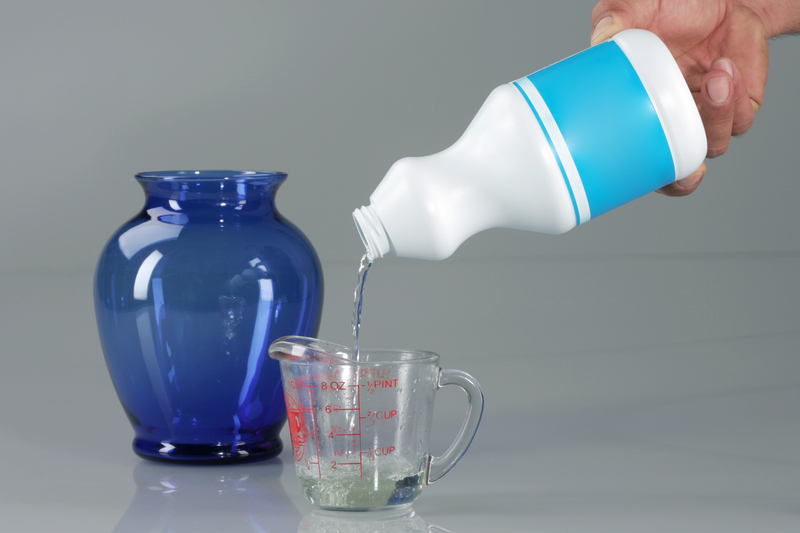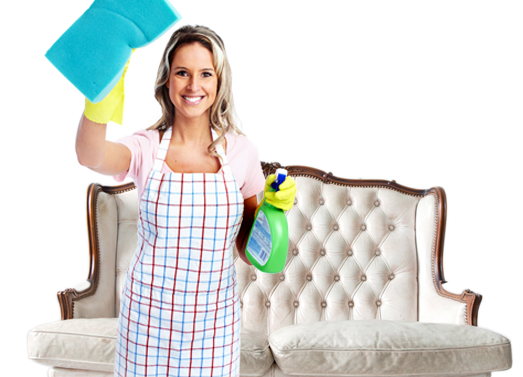Discover the secrets to spotless uPVC window frames
Posted on 01/10/2025
Discover the Secrets to Spotless uPVC Window Frames
In modern homes and office spaces, uPVC window frames have become a popular choice thanks to their outstanding durability, low maintenance, and visual appeal. However, even the highest quality frames can lose their shine over time if not cared for properly. If you're looking for expert tips to keep your uPVC window frames spotless, you've come to the right place. This comprehensive guide reveals the secrets and methods to maintaining gleaming, clean, and long-lasting uPVC frames with minimal effort.
Why Choose uPVC Window Frames?
- Durable: Resistant to weather, rust, and rot compared to traditional wood or aluminum frames.
- Low Maintenance: Requires less frequent painting or treatment.
- Cost-Effective: Offers long-term value due to durability and energy efficiency.
But, like any home feature, uPVC frame cleanliness can make a huge difference in your property's overall look and efficiency. Let's uncover the secrets to spotless uPVC window frames using simple, effective methods!

Understanding What Causes uPVC Frames to Look Dirty
To make your uPVC window frames look like new, it's essential to identify the common sources of dirt, discoloration, and grime:
- Environmental Factors: Dust, pollen, pollution, and nearby construction can coat frames with stubborn grime.
- Mold and Mildew: In damp climates, uPVC frames can develop greenish or blackish stains.
- Oxidation and Fading: Sun exposure may cause a chalky residue or slight discoloration over time.
- General Neglect: Infrequent cleaning can lead to buildup that gets harder to remove.
The key is using the right techniques and cleaning products to restore your uPVC window frames' original shine without causing damage.
How Often Should You Clean uPVC Window Frames?
Regular maintenance is crucial for achieving spotless uPVC windows. Experts recommend cleaning frames at least twice a year, but frequency can increase in dusty or rainy environments. Regular attention not only keeps them gleaming but also prevents stubborn buildup and potential staining.
The Ultimate Step-by-Step Guide to Spotless uPVC Frames
1. Gather Your Cleaning Supplies
To maximize results and avoid accidental damage, use appropriate cleaning tools:
- Soft microfiber or non-abrasive cloths
- Mild detergent (washing up liquid works well)
- Warm water
- Soft-bristled or old toothbrush for corners
- Bucket
- Spray bottle
- White vinegar or baking soda (for stubborn stains)
- Dry towels for buffing
- Rubber gloves (optional)
2. Remove Loose Dust and Debris
Begin by removing loose dirt using a dry microfiber cloth or a soft brush. This prevents scratching the frame when wet cleaning starts. Pay special attention to crevices, hinges, and seal areas. Ensuring the surface is dust-free makes the deep clean much more effective.
3. Wash with Warm Soapy Water
Mix a few drops of mild detergent with warm water in a bucket. Dampen your cloth (never soak the frame!) and gently wipe down the entire surface, focusing on heavily soiled areas. Rinse your cloth often to avoid redistributing dirt.
- Avoid strong solvents, bleach, or abrasive powders, as these can scratch or discolor your uPVC frames.
- For tight corners and grooves, use a soft-bristled toothbrush soaked in soapy water.
4. Tackle Tough Stains and Discoloration
Sometimes, normal washing isn't enough for years-old marks or mildew. Here are safe, effective approaches:
- Baking Soda Paste: Mix baking soda with a little water. Apply the paste to the stain, rub gently with a cloth, and rinse after a few minutes.
- White Vinegar Solution: Mix equal parts white vinegar and water in a spray bottle. Spray on stubborn spots and leave for 10 minutes before wiping with a damp cloth.
- Commercial Non-Abrasive Cleaners: Use specifically formulated uPVC frame cleaners for persistent stains. Always follow product instructions.
Never use wire wool, scouring pads, or harsh chemicals! These can permanently scratch the uPVC surface.
5. Address Mold, Mildew, and Algae
Mold and mildew can affect uPVC window frames, especially in humid areas. To banish fungus without damaging your frames:
- Mix a solution of 1 part white vinegar to 4 parts water.
- Spray generously onto affected areas.
- Leave for up to 15 minutes.
- Wipe and rinse thoroughly.
For extra-stubborn mold, repeat the process or consider a specialist uPVC-safe mildew remover.
6. Dry and Buff for a Lasting Shine
After cleaning, always dry the frames using a clean, dry towel. Buff away any streaks for an attractive, glossy finish. Moisture left on the frames can attract more dirt and cause dull spotting.
Pro Tips for Spotless uPVC Window Frames
- Work Top to Bottom: Clean the top of the frame first and work downward to avoid drips onto already cleaned surfaces.
- Clean in Shade: Direct sunlight can cause streaks as water dries too quickly.
- Test Products: Always test homemade or commercial cleaners on a hidden area before wider use.
- Avoid Pressure Washing: High-pressure water can damage seals and the frame's finish.
- Routine Checks: Inspect for chips, cracks, or sealant wear during cleaning.
- Don't Forget the Sills: Clean inner and outer window sills to prevent grime buildup.
DIY vs. Professional uPVC Frame Cleaning
Many homeowners wonder if a professional clean is necessary. DIY cleaning is enough for everyday upkeep, especially with regular routines. However, call in the pros if you notice:
- Extensive mold or algae growth
- Hard-to-reach upper-story windows
- Significant discoloration that doesn't respond to normal cleaning
- Physical frame damage or faulty seals
Professional cleaners use safe commercial-grade solutions and techniques for restoring gleaming, spotless uPVC frames.
Long-Term Maintenance: Extending the Life of Your uPVC Frames
Regular cleaning is just one piece of the puzzle. Preserve the brilliance and function of your uPVC windows with these maintenance habits:
Lubricate the Hinges and Locks
- Wipe away dust from moving parts.
- Apply a little light machine oil or a dedicated lock lubricant every six months.
- Avoid WD-40 spray, as it can attract more dirt over time.
Inspect and Unclog Drainage Holes
- uPVC frames feature small drainage holes at the bottom to channel rainwater.
- Use a soft brush or pipe cleaner to clear blocked holes during routine cleaning.
Check and Replace Sealant as Needed
- Examine the silicone or rubber seal around your frames for cracks or wear.
- Promptly replace damaged seals to maintain insulation and prevent water ingress.
Common Mistakes to Avoid When Cleaning uPVC Window Frames
Learning what not to do is as important as knowing how to clean uPVC window frames. Avoid these costly missteps:
- Using Abrasive Scrubbers: Scouring pads, steel wool, or harsh brushes can scratch and dull the surface.
- Applying Undiluted Bleach or Chemical Cleaners: These can cause fading and long-term damage to the finish.
- Cleaning Without Rinsing: Soap residue attracts more dirt and causes streaking.
- Forgetting to Clean the Gaskets: Neglecting frame seals can lead to hardening and leaks.
FAQs About Achieving Spotless uPVC Window Frames
Can I use vinegar to clean uPVC frames?
Yes! Diluted vinegar is an effective, safe option for removing grime and mild staining from uPVC window frames without damaging the material.
How do I remove yellowing or oxidation from uPVC?
Yellowing is often caused by age and sun exposure. Use a baking soda paste or a specialist uPVC cleaner to gently restore whiteness. In some cases, deep discoloration may be permanent and replacement is the only option.
What should I avoid when cleaning painted uPVC frames?
Never use abrasive cleaners or solvents on painted uPVC. Stick to mild soap and warm water, and avoid any scrubbing that could remove the color finish.
Is it safe to use a steam cleaner on uPVC windows?
While steam can loosen grime, the heat and moisture could damage seals or warp the frame. It's better to stick with gentle, manual cleaning techniques.
Eco-Friendly Cleaning Solutions for Spotless uPVC Frames
If you prefer environmentally conscious options, DIY solutions work incredibly well:
- Baking Soda: Natural, non-toxic, excellent for tackling stains and odors.
- White Vinegar: Biodegradable and powerful against mold, mildew, and streaks.
- Lemon Juice: With natural bleaching and antibacterial properties.
Mix these with warm water for routine cleans, avoiding harmful chemicals that can impact indoor air quality and the environment.

Summary: Your Path to Spotless uPVC Windows
Achieving and maintaining spotless uPVC window frames is easier than most people think. With regular gentle cleaning, the right products, and a little attention to detail, you can keep your windows looking brand new for years. Remember these key points:
- Clean at least twice a year (more in high-traffic or polluted areas).
- Always use non-abrasive materials and mild detergents.
- Address stains and mildew promptly with safe, tested solutions.
- Maintain hinges, locks, and seals for full window longevity.
Spotless uPVC window frames not only enhance curb appeal but also preserve the comfort, energy efficiency, and value of your home. Now that you know the secrets, you can enjoy sparkling clean frames that stand the test of time!
Further Reading & Resources
- How to Clean uPVC Windows - Homes & Gardens
- Comprehensive Guide to uPVC Window Upkeep - Federation of Master Builders
- How to Clean Windows - Ideal Home
If you found these secrets to spotless uPVC window frames useful, share this guide or bookmark it for future reference. Your dream of dazzlingly clean windows starts now!




